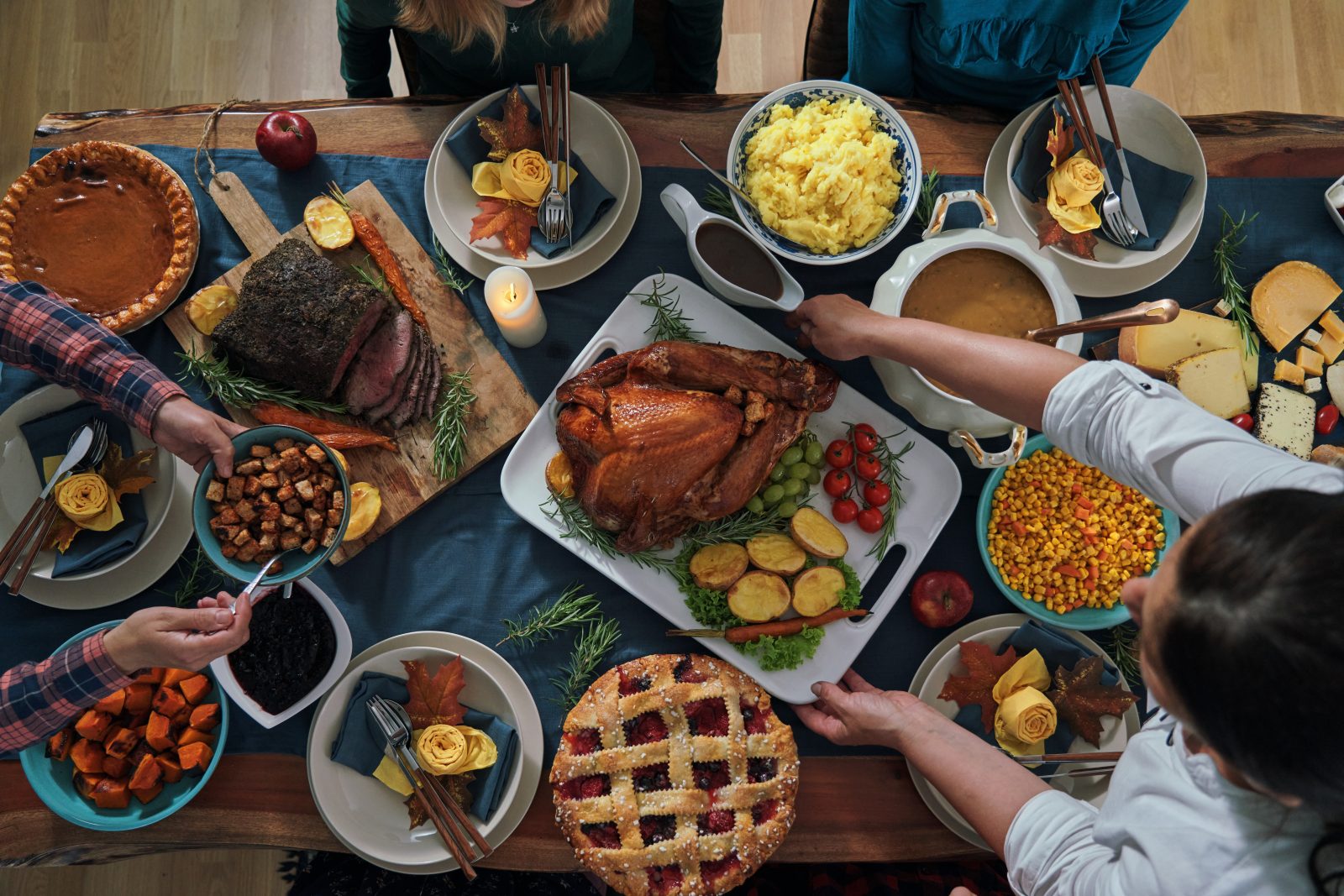
Thanksgiving is upon us. Which means Americans are about to stuff themselves silly, watch football that has nothing to do with the World Cup, take a nap—and then try to figure out what to do with all their leftovers. Sadly, a lot of it will not get eaten.
American households will waste some 305 million pounds of food this holiday, according to one recent estimate from ReFED, a New York-based food-waste research organization. That’s about triple the 115 million pounds of residential food wasted daily on average, and comes out to nearly a pound per person. But because food waste is not distributed uniformly, perhaps a better way to think about that amount, as ReFed points out, is that it would provide 6.5 meals to each of the 38.3 million food insecure people in the country.
Food waste isn’t just a humanitarian problem. It’s also an environmental one. From the farm to the dinner table, Thanksgiving food waste produces greenhouse gases equivalent to 1.1 million metric tons of CO2. That’s nearly the same emissions output as 170,000 cars driving for a year. But that’s just the start. All those unwanted heaps of stuffing and orphaned slices of pumpkin pie will potentially create additional greenhouse gasses when they break down in landfills or get incinerated. (Some surplus food that ends up in composters, anaerobic digesters, animal feed, and other more environmentally friendly destinations are not considered waste in ReFED’s analysis.)
“Culturally, Thanksgiving is about abundance, and so traditional food-management skills that consumers have go out the window,” says Jackie Suggitt, director of capital, innovation, and engagement at ReFED. “We’re cooking new foods. We’re often hosting people that we don’t normally feed. As a host, I also don’t want to run out of food so I’m likely already cooking more than I need to. And then when [guests] show up with an extra side of sweet potatoes or an extra pie, that wasn’t included in my math. All of those behaviors lead to a lot of additional waste for a single meal.”
While food waste may be more visible on Thanksgiving, it’s far from a Thanksgiving problem. And it’s not just a consumer problem, either. According to ReFED’s analysis of all the country’s food waste in 2019, the U.S. generated about 54.2 million tons, of which about 21 million tons (39%) came from residential sources. That’s the largest share of the waste, as the below chart shows, but waste accumulates at each stage of the supply chain, from the farm (27%) to the store (7%).
Households are, however, primarily responsible for the greenhouse gas emissions resulting from uneaten food.
We here at TIME don’t want to rain on a favorite tradition that is older than the country itself, but it’s worth a quick PSA before gathering this year that there are some simple and practical strategies to reduce Thanksgiving food waste and the emissions tied to it. First, notes Suggitt, is to improve meal prep plans using online resources such as Savethefood.com’s Guest-imator tool that calculates how much of each dish will be sufficient based on the types of food and the number of guests. Also, ahead of Thanksgiving, be sure to eat any leftovers already in the fridge and freezer to make space for what’s to come.
Once the meal is over, the planning starts all over again. While leftover turkey sandwiches are undeniably delicious, they can lose their appeal after several days. That’s why, Suggitt says, it’s useful to creatively reinvent the leftovers—like making a turkey soup or topping a shepherd’s pie with the remaining mashed potatoes. For the culinarily uninspired among us, a spacious freezer is a good friend. From raw ingredients left on the cutting board to fully baked casseroles, most foods freeze really well, says Suggitt. But, she warns, “it might take a little Google magic to figure out if there’s a special way to thaw something to preserve the texture and the experience of eating that food.”
More Must-Reads from TIME
- How Donald Trump Won
- The Best Inventions of 2024
- Why Sleep Is the Key to Living Longer
- How to Break 8 Toxic Communication Habits
- Nicola Coughlan Bet on Herself—And Won
- What It’s Like to Have Long COVID As a Kid
- 22 Essential Works of Indigenous Cinema
- Meet TIME's Newest Class of Next Generation Leaders
Contact us at letters@time.com